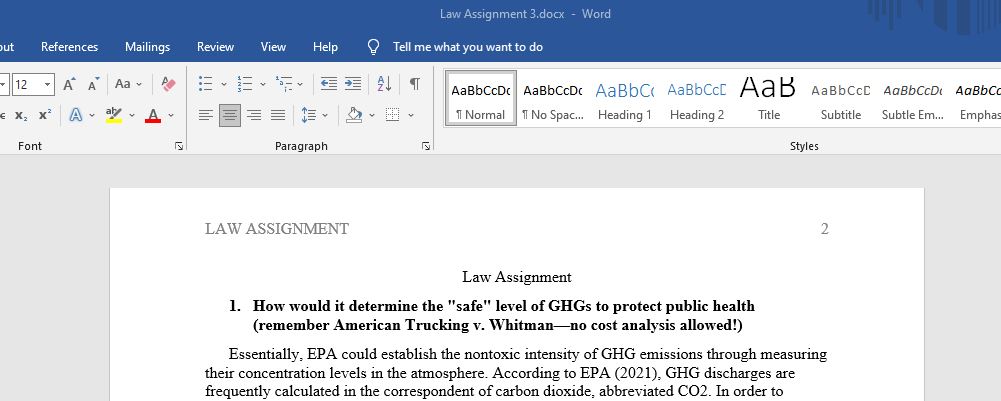Law Assignment on regulating GHGs
EPA received a petition to regulation GHGs as a criteria pollutant under the CAA, so that it would have to set National Ambient Air Quality Standards that would have to be met in each Air Quality Control Region of the country.
EPA has not acted on the petition at all. Instead, it has started regulating GHGs via emissions standards from mobile sources, then under the permitting requirements for stationary sources.
If EPA did add GHGs as a criteria pollutant:
- How would it determine the “safe” level of GHGs to protect public health (remember American Trucking v. Whitman—no cost analysis allowed!)
- What is the next action that must be taken in the CAA when a new NAAQS is set for a pollutant?
- Is setting NAAQS for GHG pollutants a good policy choice? Remember that this is not a legal question—considering the goal of the program, the costs and benefits to society of reaching the goal, the constraints imposed by economic and physical realities—is using the NAAQS structure a good idea for regulating GHGs, or do you prefer another possible regulatory scheme? Which one and why?
Requirements: Half page or so single spaced | .doc file
Answer preview:

word limit:300
